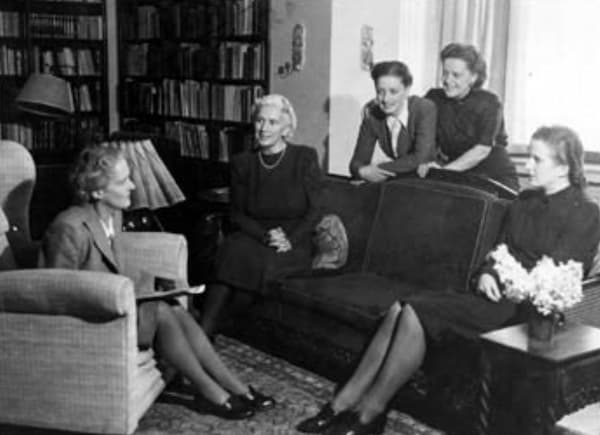The history of classical music is essentially populated and written by Caucasian white males. Everybody knows the names Ludwig van Beethoven and Wolfgang Amadeus Mozart, but do you know Margaret Bonds, Eleanor Alberga, Bright Sheng, Isang Yun, Priti Paintal and countless other minority composers who have contributed to this vast area of human creativity? It certainly seems that the world of classical music has not been very inclusive, and like other areas, it is still guided by “unconscious racism and class.”
In this blog we decided to shine the spotlight on the achievements of classical composers from across a vast spectrum of diversity, starting with the exceptional composer and pianist Margaret Bonds (1913-1972).
Margaret Bonds

Margaret Bonds
In music history, Bonds was one of the first Black composers and performers to gain recognition in the United States, and initially studied piano and composition with Florence Price and William Dawson. In 1929, at the age of 16, Bonds began her studies at Northwestern University, where she earned both a Bachelor of Music and Master of Music degrees in piano and composition. She was one of the few black students and “the environment was hostile, racist, and nearly unbearable.” Although she was permitted to study there, she was not permitted to reside on campus. She later recalled, “I was in this prejudiced university, this terribly prejudiced place…. I was looking in the basement of the Evanston Public Library where they had the poetry. I came in contact with this wonderful poem, “The Negro Speaks of Rivers” by Langston Hughes, and I’m sure it helped my feelings of security. Because in that poem he tells how great the black man is. And if I had any misgivings, which I would have to have – here you are in a setup where the restaurants won’t serve you and you’re going to college, you’re sacrificing, trying to get through school – and I know that poem helped save me.” At the age of 22, Bonds became the first black soloist to appear with the Chicago Symphony Orchestra, and later was active in the theater, serving as music director for numerous productions. Margaret Bonds is unique in the history of classical music as she did much to promote the music of black musicians during a period of open racism and oppression. Her own compositions and lyrics addressed many racial issues of the time. As her colleague Undine Smith Moore (1904-1989), the Dean of Black Women Composers, wrote, “one of the most evil effects of racism in my time was the limits it placed upon the aspirations of blacks, so that though I have been ‘making up’ and creating music all my life, in my childhood or even in college I would not have thought of calling myself a composer or aspiring to be one.”
Margaret Bonds: Spiritual Suite
Bright Sheng
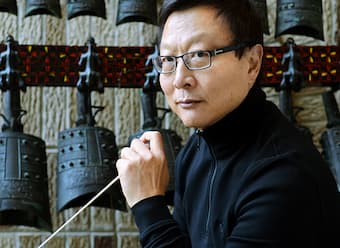
Bright Sheng
Chinese composers have long faced racism and stereotyping, and Chinese instrumentalists are currently facing resentment for their growing prominence and startling technical skills. A contemporary commentator wrote, “despite the influence of musicians of color on nearly every conceivable genre, the classical music field remains starkly white and Asian.” In the eyes of some, Chinese musicians are now seen to hold a position of social power in the world of classical music. The award-winning composer, conductor and pianist Bright Sheng originally hailed from Shanghai. During the horrendous days of the Cultural Revolution he was forcible separated from his family and sent to Tibet, simply because he was interested and showed talent in western music. He mentally survived his exile in a forced labor camp by playing piano and percussion for a local theater company.
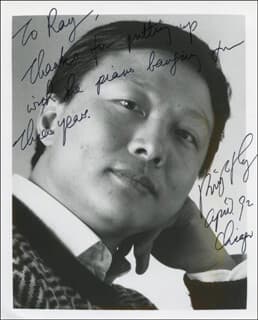 Sheng was in the first class of students to be admitted into the Shanghai Conservatory of Music to study classical music, and he left China to join his family in the United States in 1982. The musical expressions of Tibet, and indeed much of Chinese minority culture, have provided a lifetime of inspiration and commercial success for Bright Sheng. “The majority of his musical compositions, theatrical productions as well as his prose writings, provide a clear personalized testimonial of his artistic experiences and political convictions.” Sheng has written himself into the history of classical music, and his compositions are performed at the great symphony halls and opera houses of the world, as he attempts to integrate Asian and Western culture in his musical and theatrical expressions. Counting Béla Bartók among his greatest influences, Sheng believes that “his music fits within two of the ways Bartók believed folk music can be used in composition: imitating the melody in the folkloric style and writing not deliberately in the style of folk music but with its flavor.” Sheng has become a respected composer of art music, but that success has now turned him into a target for the cancel culture movement.
Sheng was in the first class of students to be admitted into the Shanghai Conservatory of Music to study classical music, and he left China to join his family in the United States in 1982. The musical expressions of Tibet, and indeed much of Chinese minority culture, have provided a lifetime of inspiration and commercial success for Bright Sheng. “The majority of his musical compositions, theatrical productions as well as his prose writings, provide a clear personalized testimonial of his artistic experiences and political convictions.” Sheng has written himself into the history of classical music, and his compositions are performed at the great symphony halls and opera houses of the world, as he attempts to integrate Asian and Western culture in his musical and theatrical expressions. Counting Béla Bartók among his greatest influences, Sheng believes that “his music fits within two of the ways Bartók believed folk music can be used in composition: imitating the melody in the folkloric style and writing not deliberately in the style of folk music but with its flavor.” Sheng has become a respected composer of art music, but that success has now turned him into a target for the cancel culture movement.
Bright Sheng: Three Chinese Love Songs
Joseph Boulogne
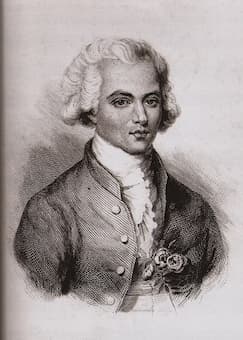
Chevalier de Saint-Georges
He was called “Le Mozart Noir,” and Joseph Boulogne, Chevalier de Saint-Georges (1748-1799) was the darling of French Society. Born in St. Dominique to a wealthy plantation owner and his black Senegalese slave Nanon, Saint-Georges was considered the finest swordsman in Europe. He was a superb all-around athlete and military commander during the Revolutionary period; however, he also made it into the pages of the history of classical music by being among the most important musicians in Paris in his days.
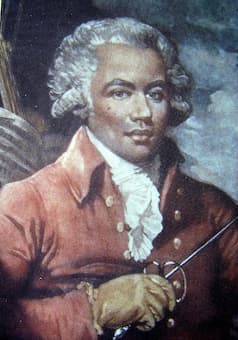 He became an orchestral violinist under François-Joseph Gossec in the newly established “Concert des Amateurs,” and he made his solo debut with that orchestra in 1772. When the Paris Opera needed a new director, the Queen put forth his name, and Louis XVI agreed with Saint-Georges’ appointment. However, some leading ladies of the opera company presented a petition to the Queen stating, “their honour and the delicate nature of their conscience made it impossible for them to be subjected to the orders of a mulatto.” As the result of this blatant discrimination, Saint-Georges’ nomination was withdrawn and the job left vacant. Saint-George was hugely successful as a violinist, conductor and a composer of classical music, writing chamber and instrumental music during the Classical Era. There can be no doubt that Saint-Georges substantially contributed to the history of classical music.
He became an orchestral violinist under François-Joseph Gossec in the newly established “Concert des Amateurs,” and he made his solo debut with that orchestra in 1772. When the Paris Opera needed a new director, the Queen put forth his name, and Louis XVI agreed with Saint-Georges’ appointment. However, some leading ladies of the opera company presented a petition to the Queen stating, “their honour and the delicate nature of their conscience made it impossible for them to be subjected to the orders of a mulatto.” As the result of this blatant discrimination, Saint-Georges’ nomination was withdrawn and the job left vacant. Saint-George was hugely successful as a violinist, conductor and a composer of classical music, writing chamber and instrumental music during the Classical Era. There can be no doubt that Saint-Georges substantially contributed to the history of classical music.
Joseph Boulogne, Chevalier de Saint-Georges: Violin Concerto in A Major, Op. 7 No. 1
Kosaku Yamada
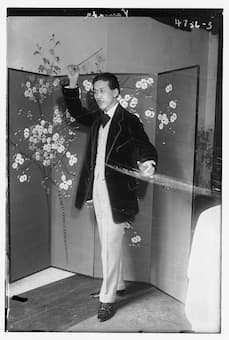
Kosaku Yamada , 1918
The Japanese composer and conductor Kosaku Yamada (1886-1965) was one of the pioneering figures in the history of classical music, especially Japanese art song. He studied in Berlin with Max Bruch between 1910 and 1913, and experimented with the classical and romantic style in the tradition of Mendelssohn and others. His “Triumph and Peace” Symphony was his graduation project in Berlin. Yamada later turned to the techniques of the late Romantic Lied practiced by Mahler and Richard Strauss, and furthering his studies in the USA, he composed roughly 1,600 compositions, among them the song cycle Songs of Aiyan to poems by Hakushū Kitahara (1885-1942), widely regarded as one of the most popular and important poets in modern Japanese literature.
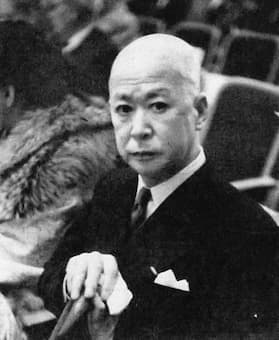 During his time in Germany, Yamada was the subject of extensive racial prejudice, and he was even forced to change his first name. Once he returned to Japan, he introduced many classical compositions to his home country. He was the first performer in Japan of Debussy’s Prélude à l’après-midi d’un faune, Dvořák’s Symphony No. 9, Gershwin’s An American in Paris, Mosolov’s Iron Foundry, Sibelius’ Finlandia, Shostakovich’s Symphony No. 1, Johann Strauss II’s An der schönen blauen Donau, and Wagner’s Siegfried Idyll. Yamada was true pioneer in the field of art music.
During his time in Germany, Yamada was the subject of extensive racial prejudice, and he was even forced to change his first name. Once he returned to Japan, he introduced many classical compositions to his home country. He was the first performer in Japan of Debussy’s Prélude à l’après-midi d’un faune, Dvořák’s Symphony No. 9, Gershwin’s An American in Paris, Mosolov’s Iron Foundry, Sibelius’ Finlandia, Shostakovich’s Symphony No. 1, Johann Strauss II’s An der schönen blauen Donau, and Wagner’s Siegfried Idyll. Yamada was true pioneer in the field of art music.
Kosaku Yamada: Symphony in F “Triumph and Peace”
Eleanor Alberga
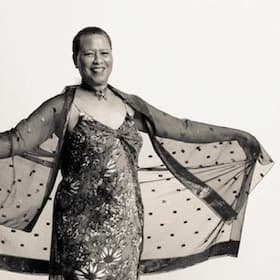
Eleanor Alberga
Eleanor Alberga was born in Kingston, Jamaica, and from an early age she decided to be a concert pianist and composer. In 1970 she won a scholarship to study at the Royal Academy of Music in London, and by 2001 she decided to forego her career as a concert pianist to fully concentrate on composition. Her works have been commissioned and performed by the Royal Philharmonic, the London Philharmonic and the Mozart Players, and her work Arise, Athena! opened the 2015 Last Night of the Proms. She explains, “Composers from minority groups are effectively silenced because they do not fit into classical music’s inner club.” She encounters prejudice on a regular basis, “as the perception of black music as jazz or reggae or coming from a roots background is still with us and probably leads to a hesitancy or even condescension in welcoming black people as part of the classical music family.”
 Alberga says that most of her commissions came for projects with a racial agenda such as slavery. “One would like simply to be commissioned regularly without racial agendas—and not just for Black History Month… The powers that be must start to include all races on an ongoing basis. These powers could also entertain a broader concept of what a mainstream contemporary composer sounds and looks like so there isn’t just an inner club of composers who get heard while others are effectively silenced.”
Alberga says that most of her commissions came for projects with a racial agenda such as slavery. “One would like simply to be commissioned regularly without racial agendas—and not just for Black History Month… The powers that be must start to include all races on an ongoing basis. These powers could also entertain a broader concept of what a mainstream contemporary composer sounds and looks like so there isn’t just an inner club of composers who get heard while others are effectively silenced.”
Eleanor Alberga: String Quartet No. 1
Isang Yun
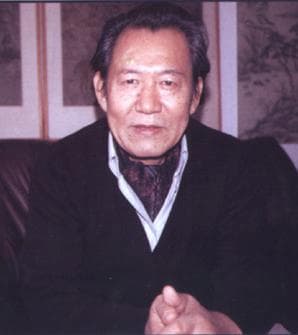
Isang Yun
The history of classical music is full of incredible experiences of human courage and perseverance. Isang Yun was born on 17 September 1917 near the southeastern seaport Tongyông, at a time when the Korean peninsula was under Japanese occupation. He was active in the resistance against Japanese occupation and was made a political prisoner in 1943. As he wrote, “A composer cannot view the world in which he lives with indifference. Human suffering, oppression, and injustice… all that comes to me in my thoughts. Where there is pain, where there is injustice, I want to have my say through my music.” He received the Seoul City Culture Award in 1955, and was able to study in Paris and Berlin from 1956 to 1959. In 1967 Yun was abducted from Berlin to Seoul by the Korean secret police, and was tortured and charged with high treason. In a political show trial he was sentenced to life imprisonment in the first instance, and he composed his opera Butterfly Widow behind bars.
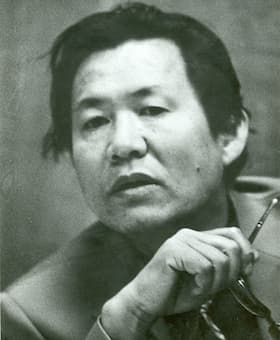 Yun was released in 1969 after international protests, and made his home in West Germany. Striving for harmony and peace, Yun’s political goal had always been the reconciliation on the Korean peninsula. As a composer of art music, Yun explored aesthetic and philosophical issues relating to Asian traditional music, Chinese Taoism and Western avant-garde compositional procedures. “I was born in Korea and project that culture,” he said, “but I developed musically in Europe. I don’t need to organise or separate elements of the cultures. I am a unity, a simple person. It’s a synthesis.”
Yun was released in 1969 after international protests, and made his home in West Germany. Striving for harmony and peace, Yun’s political goal had always been the reconciliation on the Korean peninsula. As a composer of art music, Yun explored aesthetic and philosophical issues relating to Asian traditional music, Chinese Taoism and Western avant-garde compositional procedures. “I was born in Korea and project that culture,” he said, “but I developed musically in Europe. I don’t need to organise or separate elements of the cultures. I am a unity, a simple person. It’s a synthesis.”
Isang Yun: Piano Trio
Gabriela Lena Frank

Gabriela Lena Frank © Charlos Chavarria/NYT
Gabriela Lena Frank was born in Berkely, California, but that is only half of her story. She is the daughter to a mother of mixed Peruvian/Chinese ancestry and a father of Lithuanian/Jewish descent. She eagerly explores her multicultural heritage through her compositions, and she has extensively travelled throughout South America. “Her pieces reflect and refract her studies of Latin-American folklore, incorporating poetry, mythology, and native musical styles into a western classical framework.” Her work has been described as “crafted with unselfconscious mastery,” “brilliantly effective,” “a knockout,” and “glorious.” Identity is always at the center of Frank’s music, and as a musical anthropologist “there is usually a story line behind my music, a scenario or character.”
 Such is certainly the case in her Leyendas (Legends): “An Andean Walkabout.” Composed in 2001, she explains “An Andean Walkabout for string quartet, later arranged for string orchestra, draws inspiration from the idea of mestizaje as envisioned by the Peruvian writer José María Arguedas, where cultures can coexist without the subjugation of one by the other. As such, this piece mixes elements from the western classical and Andean folk music traditions.” Frank incorporates a wide variety of Andean instruments, a legendary runner from the Inca period, professional crying women, and a flirtatious love song sung by “romanceros.” She is a member of the Silk Road Ensemble and receives regular commissions from Yo Yo Ma, the Kronos Quartet and a host of leading orchestras.
Such is certainly the case in her Leyendas (Legends): “An Andean Walkabout.” Composed in 2001, she explains “An Andean Walkabout for string quartet, later arranged for string orchestra, draws inspiration from the idea of mestizaje as envisioned by the Peruvian writer José María Arguedas, where cultures can coexist without the subjugation of one by the other. As such, this piece mixes elements from the western classical and Andean folk music traditions.” Frank incorporates a wide variety of Andean instruments, a legendary runner from the Inca period, professional crying women, and a flirtatious love song sung by “romanceros.” She is a member of the Silk Road Ensemble and receives regular commissions from Yo Yo Ma, the Kronos Quartet and a host of leading orchestras.
Gabriela Lena Frank: Leyendas (Legends): “An Andean Walkabout” (excerpts)
Priti Paintal

Priti Paintal
Priti Paintal was born in New Delhi, India. She learned piano as a child and later sitar and tabla, and she is regarded as a pioneer in the field of cross-cultural music. Born into a family that includes musicians, eminent scientists and doctors, she studied piano and composition in India where The British Council heard her perform with the Delhi Symphony Orchestra and offered her the chance to train formally in music composition. After gaining her Masters in Anthropology from Delhi University she came to Britain and studied composition at York University and at Royal Northern College of Music, Manchester with Anthony Gilbert.
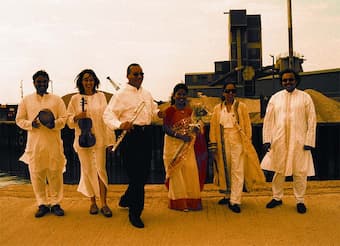
ShivaNova
Priti set up the ensemble “ShivaNova” in 1988 with the aim of bringing together diverse musical styles to unite sound-worlds. ShivaNova combines Asian classical, African and Western musical influences to create an original global sound. Priti’s music brings together traditional, classical and jazz performers in a unique mix of Indian roots and contemporary flair. Her work includes collaborations with storytellers, jugglers, dancers and orchestras, as well as creating workshops in schools and the wider community. In 1994, she resigned from the Arts Council’s music panel protesting over the lack of support for diverse forms of music. Then, she, along with many music organisations and independent promoters, co-founded, THE MAIN MUSIC AGENDA, to draw attention to the diversity of music played and studied throughout the country.
The history of classical music is a messy affair, just like anything else touched by human hands. And, as we have seen, definitions of what constitute minorities are fluid and constantly changing, “as it includes both objective and subjective criteria. Membership of a minority group is objectively ascribed by society, based on an individual’s physical or behavioral characteristics, such as ethnicity and race or gender and sexuality. However, it is also subjectively applied by its members, who may use their status as the basis of group identity or solidarity.” Classical music is constantly evolving, and I think it will be greatly enriched by adopting a top-to-bottom policy of inclusion and diversity.
For more of the best in classical music, sign up to our E-Newsletter
Priti Paintal: Secret Chants


